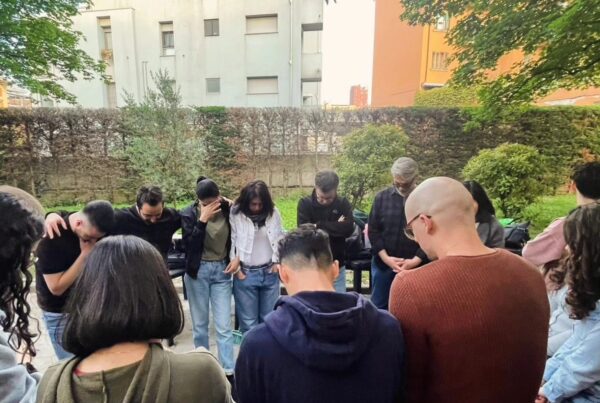Why plant new churches? If you aren’t in the United States, you might not be asking this question. There isn’t a church on every corner in Iran or Uganda or China. And there may not be many healthy, gospel-preaching churches around you if you’re in Brazil, England, or Mexico.
Planting new churches in those countries might seem more obvious and necessary—and our missions efforts should be church-planting efforts! But for now, I want to ask why we should plant new churches down the street from our churches and even in seemingly church-saturated nations and cities.
Churches Closing & Population Growing
In 2018 a study called The Great Opportunity was done on churches in America: “Since many churches have a lifespan of about 70 to 100 years, and since many of the Baby Boomer churches were planted in the early 1950s, we expect a significant wave of church closures in the near future. Church planting is near an all-time low on a per-capita basis; we need to triple church planting within the next five to ten years to meet the need.”
Lifeway Research confirmed they were right the following year: “In 2019, approximately 3,000 Protestant churches were started in the U.S., but 4,500 Protestant churches closed.” Just five years before, those numbers were reversed. And the pandemic certainly didn’t help—the numbers coming in 2024 will be worse. New churches must learn how to evangelize in the current cultural moment. As society changes, so do the needs and questions of the people. Click To Tweet
Granted, some churches need to close. They aren’t biblically faithful, and Jesus rightfully snuffs their lampstand out (see Rev. 2–3). Or, this is where church revitalization becomes a great gospel alternative to church planting—God calling some folks to step into a dying church to bring new life and ministry. But there still are not enough biblically faithful churches to reach the lost. More churches are being uprooted than planted.
Changing Cultural Tides & Bold Evangelism
Established churches (and established Christians) are typically more, well, established. They’ve done church a certain way for too long, and any cultural shifts present a missional roadblock to the established church.
Perhaps they don’t ruffle cultural feathers or stir any political pots because they aren’t really in that conversation—they’re doing church. They were planted during a different time, in a different kind of garden, with different types of weeds. This is a challenge to any established church, and they should fight to stay on mission in the changing cultural tides while holding onto the unchanging truth of the gospel.
But new churches must learn how to evangelize in the current cultural moment. As society changes, so do the needs and questions of the people. Cultural shifts require new churches planted around different kinds of weeds that can speak the gospel into new contexts. Too many church plants have found themselves colonized by the culture, never actually reaching it. Click To Tweet
For example, when we started 12 years ago, questions around gender, women in leadership, abortion, etc., were understood to be debated. But now people are surprised to hear there even is a debate! They assume what they learn from the culture is the norm. Twelve years ago, churches might have spoken of the immorality of the culture around us, but now, the culture around us thinks we are immoral!
Beware, though, in an effort to reach the culture, many churches have found themselves reached by the culture. The stiff, traditional, old, fundamentalist church up the road might be a stick in the gospel mission mud, but they’ve stuck to their guns all these years and are still faithful to the Word, at least. Too many church plants have found themselves colonized by the culture, never actually reaching it. Don’t let the world gentrify your spiritual heart after you move into the neighborhood with your missional cultural engagement. It’s the light that overcomes the darkness, not the other way around.
Geographic Intentionality & Urbanization
According to the United Nations, 68% of the world’s population will live in urban areas by 2050. This trend is not limited to the United States—there’s a global movement to the city. God is moving people around, and the church must move, too.
Of course, God also loves the suburbs and rural areas. And we’ve seen a huge benefit to planting from the city into the surrounding neighborhoods and towns. Geographic intentionality and contextualized ministry make gospel work more effective.
As our younger members married and started having kids, they would move out from center-city Fort Worth, sent into new neighborhoods on mission—strollers and car seats in tow. They traded their bars and coffee shops for soccer games and PTA meetings—but their gospel witness never changed. Geographic intentionality and contextualized ministry make gospel work more effective. Click To Tweet
Planting churches in suburban and rural areas is both necessary and effective in reaching the whole family. Each church can now minister in a contextualized way determined by the needs of the people they reach—but infused with the missional DNA of the sending church planted in the heart of the city. However, planting new churches in cities is still the greatest need.
God loves people, and cities have a lot of people. And those people are the ones stirring the waters that change cultural tides. In every sphere—business, art, education, government, media, finance, tech—the city is its upstream home, flowing out to the rest of the world.
So we plant churches because more are needed to keep up with church closures and population growth; we plant new churches because they are typically more effective in reaching a radically changing culture. And we plant churches to be intentional to contextualize our gospel witness to the whole world, especially in cities where there is the most need and opportunity.










